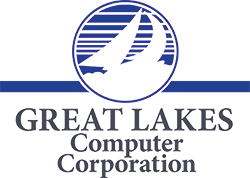[vc_row][vc_column][vc_column_text]
Companies sticking with legacy systems are far from alone
 The common perception of business IT systems is that firms both large and small generally strive to be on the cutting edge of technology – adopting flat-screen panel monitors, for example, long before such items became a common item for use with home PCs. The reality in the business world, however, is often quite different. Many businesses choose to maintain some of their most critical computing functions on legacy systems that are outmoded by any definition of the term. This practice, in fact, is far more widespread than is commonly believed.
The common perception of business IT systems is that firms both large and small generally strive to be on the cutting edge of technology – adopting flat-screen panel monitors, for example, long before such items became a common item for use with home PCs. The reality in the business world, however, is often quite different. Many businesses choose to maintain some of their most critical computing functions on legacy systems that are outmoded by any definition of the term. This practice, in fact, is far more widespread than is commonly believed.
The reasons for keeping a legacy system, such as the IBM AS400, in operation are based on two factors of intense interest to any business destined to survive: risk and cost. Replacing a legacy system merely because more powerful alternatives now exist can be problematic because at a basic level, it boils down to fixing something that is not broken. As long as a legacy system continues to perform its core function competently, both SMBs and large corporations often see no reason to make a change.
Risks of legacy system replacement
In large part, this is because any change inevitably involves risk. No matter how much is known in advance about a new system, surprises tend to pop up once it is installed and goes into operation. Common shortcuts that workers have grown used to may no longer be available, and there may be nothing comparable in the new system. This can reduce efficiencies in processing daily workflow. Companies that have changed software or hardware platforms before are well aware of this phenomenon and are understandably reluctant to give up the known for the unknown.
Costs of legacy system replacement
Even if a new system ends up containing no such “gotchas,” a legacy system still represents a level of in-house expertise that has grown up over the years to become a part of the company culture. New employees can be quickly and efficiently trained to use a legacy system because they will be surrounded by experts at using the system. Replacing a legacy system, however, means incurring significant training and re-training costs. All workers will have to start from scratch and it will be years before a comparable level of expertise develops. This training period also represents costs in terms of efficiency and workflow; until workers are fully competent with the new system, glitches, errors and other problems are only to be expected.
Meeting maintenance needs
Companies that avoid the costs and risks associated with replacing legacy systems will need to be sure to arrange for a competent third party repair firm to assist them on an as-needed basis. This is best done sooner rather than later in order to avoid surprises from an OEM that is no longer supporting a given system.
Many third party repair firms offer varying and customizable contract levels, and will save you money over the high costs OEM’s charge for similar services. Learn how Great Lakes Computer can save you 50% with convenient maintenance plans for any budget.
[/vc_column_text][/vc_column][/vc_row]
